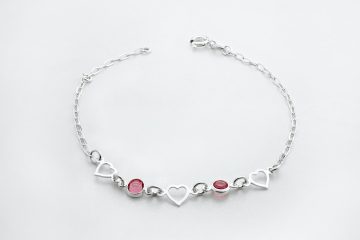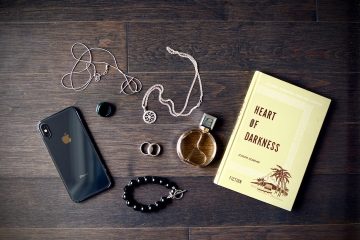Introduction
In recent years, the wearing of evil eye bracelets has gained popularity, captivating the attention of people around the world. These unique and intricate pieces of jewelry are believed to possess protective qualities, guarding against the malevolent gaze of the evil eye. However, despite their rising popularity, there has been a fair share of controversy surrounding these bracelets. Some argue that they are mere superstitious objects, lacking any real power or significance. In this article, we will delve into the controversy surrounding evil eye bracelets, debunking myths and exploring their cultural significance.
Understanding the Evil Eye
To comprehend the controversy surrounding evil eye bracelets, it is essential to understand the concept of the evil eye itself. The evil eye is a widespread belief found in various cultures and civilizations throughout history. It is believed that certain individuals possess the ability to cast an evil eye, inadvertently causing harm to others through envy or malice. The evil eye is often associated with feelings of jealousy, and it is believed that these envious glances can bring about misfortune or bad luck.
Myth: Evil Eye Bracelets Have No Protective Powers
One of the main arguments against the wearing of evil eye bracelets is the belief that they have no real protective powers. Skeptics argue that these bracelets are nothing more than decorative items, lacking any genuine ability to ward off evil. However, proponents of evil eye bracelets firmly believe in their protective qualities and claim that wearing them can shield individuals from the negative effects of the evil eye.
While scientific evidence may not support the protective powers attributed to evil eye bracelets, it is important to acknowledge the subjective nature of belief and the role it plays in cultural practices. Many individuals find solace and comfort in the symbolism and tradition associated with evil eye bracelets, regardless of their actual efficacy.
Cultural Significance: Evil Eye Bracelets Around the World
Evil eye bracelets are deeply rooted in various cultures across the globe. Although they may differ in design and interpretation, the underlying belief in their protective nature remains consistent. Let’s explore a few examples of how different cultures incorporate the evil eye bracelet into their traditions:
1. Mediterranean Region
In countries such as Greece, Turkey, and Egypt, the evil eye bracelet is widely prevalent. It is believed to protect against the malevolent gaze of the evil eye and is often worn by individuals of all ages. The intricate designs and vibrant colors of these bracelets reflect the rich cultural heritage of the Mediterranean region.
2. Middle East
In Middle Eastern countries like Iran and Lebanon, the evil eye bracelet, also known as the “nazar” bracelet, is highly regarded. It is believed to offer protection against envy and ill-wishing. The nazar symbol, an eye-shaped amulet, is often incorporated into the design of these bracelets to enhance their protective qualities.
3. South Asia
In South Asian countries such as India and Pakistan, the evil eye bracelet, known as the “nazar battu,” is a popular talisman. It is believed to safeguard individuals from the malevolent intentions of others and is often worn by newborn babies and young children.
Debunking Misconceptions: The Power of Symbols
Critics often argue that the protective powers attributed to evil eye bracelets are baseless and devoid of any factual evidence. However, it is important to understand that symbols carry significant meaning in cultural and religious contexts. Symbols can evoke emotions, beliefs, and values that transcend rational explanations. The power of symbols lies in their ability to unite communities, provide a sense of identity, and offer protection against perceived threats.
The evil eye bracelet, with its distinct design and symbolism, serves as a reminder to individuals to remain vigilant against negative energies and to embrace positivity. It acts as a talisman, instilling confidence and warding off the harmful effects of envy and ill-wishing.
Conclusion
In conclusion, the controversy surrounding the wearing of evil eye bracelets is deeply rooted in differing belief systems and cultural perspectives. While skeptics argue against their protective powers, proponents emphasize the symbolic significance and cultural heritage associated with these bracelets. Regardless of whether one believes in their efficacy, the popularity of evil eye bracelets continues to grow, reflecting a global fascination with ancient beliefs and traditions.
Evil eye bracelets serve as a tangible representation of the intangible, reminding individuals to be mindful of their thoughts, actions, and intentions. They bridge the gap between the physical and the metaphysical, offering a sense of comfort and protection in a world filled with uncertainties.
FAQs
Q1: Are evil eye bracelets only worn for protection?
No, evil eye bracelets are not solely worn for protection. While they are primarily associated with warding off the evil eye, they are also worn as fashionable accessories. Many people appreciate the intricate designs and vibrant colors of these bracelets, making them a popular choice for personal adornment.
Q2: Can evil eye bracelets bring good luck?
While evil eye bracelets are primarily intended to protect against the evil eye, some individuals also believe that they can bring good luck. The symbolism associated with these bracelets is often associated with positive energy and protection from negative influences.
Q3: Are evil eye bracelets specific to a particular religion?
No, evil eye bracelets are not specific to a particular religion. They are found in various cultures and religions, each with their own interpretation and symbolism. The belief in the evil eye and the use of evil eye bracelets transcend religious boundaries.
Q4: Can evil eye bracelets be worn by anyone?
Yes, evil eye bracelets can be worn by anyone, regardless of their age, gender, or religious beliefs. They are often seen as a universal symbol of protection and are embraced by individuals from diverse backgrounds.
Q5: How should I choose an evil eye bracelet?
When choosing an evil eye bracelet, consider your personal style and preference. There are various designs and materials available, ranging from simple to elaborate. Select a bracelet that resonates with you and reflects your individuality.




